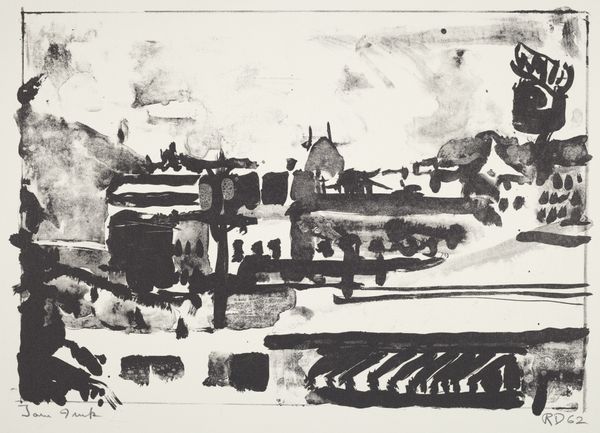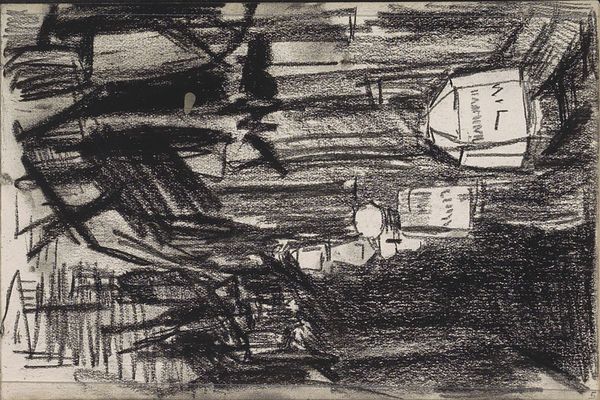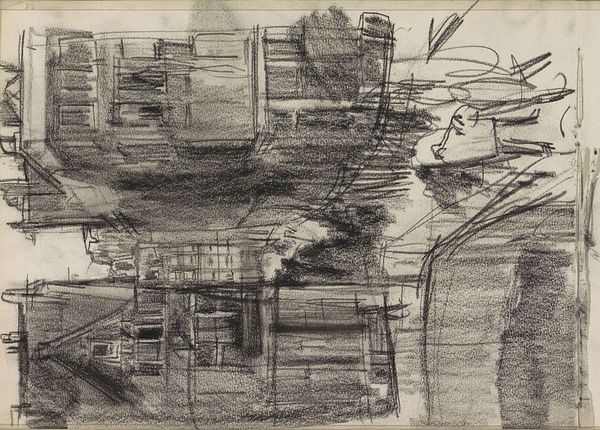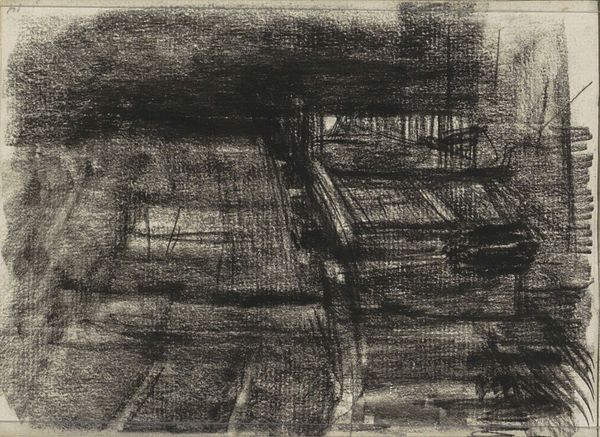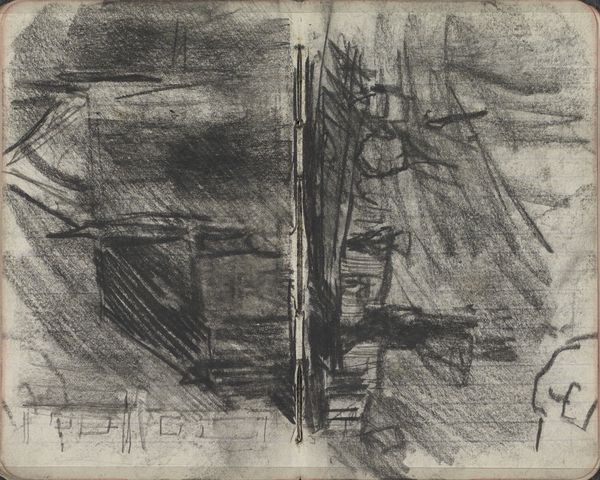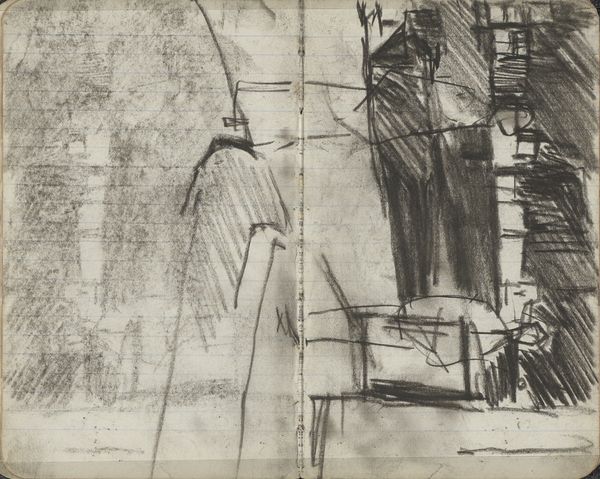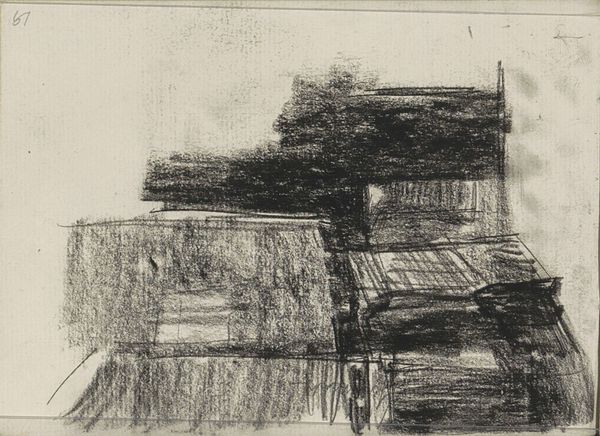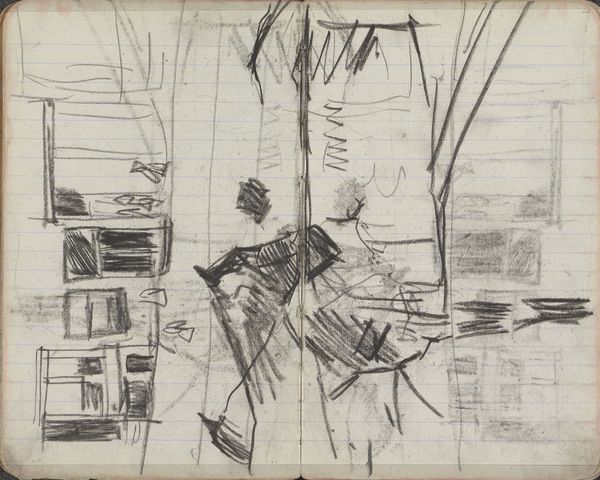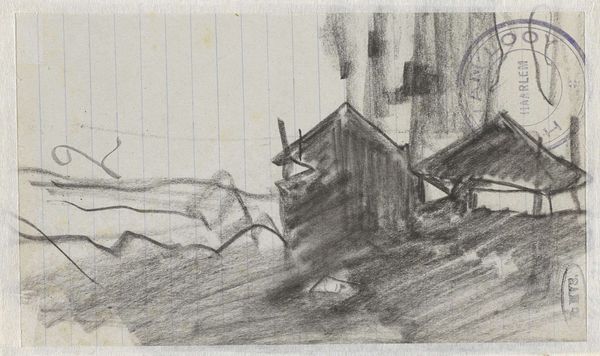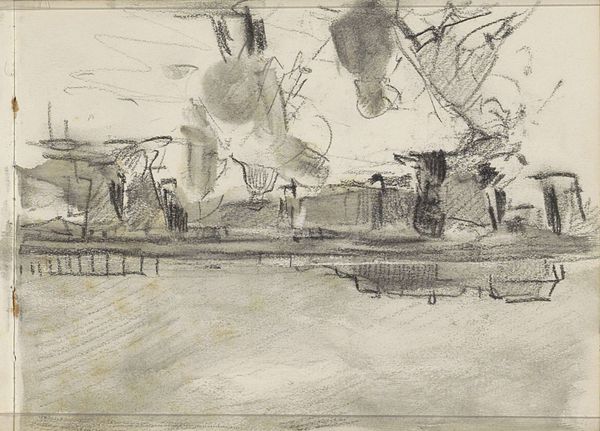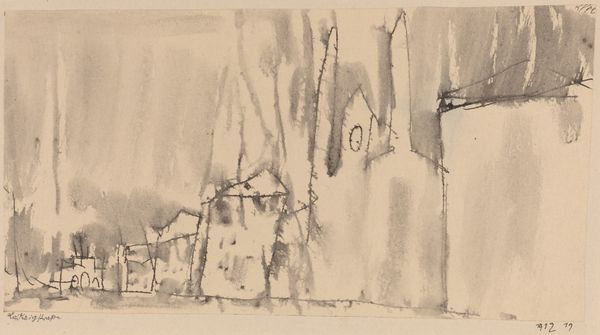
drawing, print, ink
#
abstract-expressionism
#
drawing
#
ink drawing
# print
#
landscape
#
bay-area-figurative-movement
#
ink
#
cityscape
Dimensions: image: 22.1 x 32.8 cm (8 11/16 x 12 15/16 in.) sheet: 28.8 x 41.1 cm (11 5/16 x 16 3/16 in.)
Copyright: National Gallery of Art: CC0 1.0
Editor: Here we have Richard Diebenkorn's "L.A. Landscape," a 1962 ink drawing or print. It feels kind of raw and immediate, doesn't it? Like a snapshot, but roughed up. What do you see in this piece? Curator: I see an exploration of the labor involved in representing a landscape, of the physical act of mark-making as it intersects with the social construction of space. Diebenkorn isn’t just depicting a scene; he’s using ink – a relatively accessible, reproducible medium – to investigate how we come to understand the landscape around us through visual shorthand. Note the weight of the ink, its varied application – almost like layers of labor piled one atop another. What do you make of the lack of color? Editor: That's interesting! I hadn't thought about it as labor itself being represented. The lack of color definitely amplifies the roughness. Does that limitation in color push Diebenkorn toward focusing on form and texture more? Almost stripping away any pretense of idealized landscape painting? Curator: Precisely. By limiting himself to ink, he draws attention to the fundamental materiality of the image-making process. It prompts us to consider how readily available, even "common" materials like ink can be used to question established notions of fine art and craft. The marks themselves point back to the artist's hand, his decisions and process – democratizing the work somehow. Editor: So, by emphasizing the materials and process, Diebenkorn is making us more aware of the production of art, the work involved? It almost feels like he's critiquing the idealized landscape. Curator: Absolutely. It's less about presenting a perfect vista and more about the very act of seeing and translating, acknowledging the social and economic factors influencing how we perceive and represent our environments. It urges the viewer to question what materials constitute "high" art, and why. Editor: I never thought about the implications of the materials used that way. I'll definitely be thinking about process and social context more critically from now on. Thanks! Curator: My pleasure. It’s a great reminder that even seemingly simple choices reflect deeper cultural and economic narratives.
Comments
No comments
Be the first to comment and join the conversation on the ultimate creative platform.
